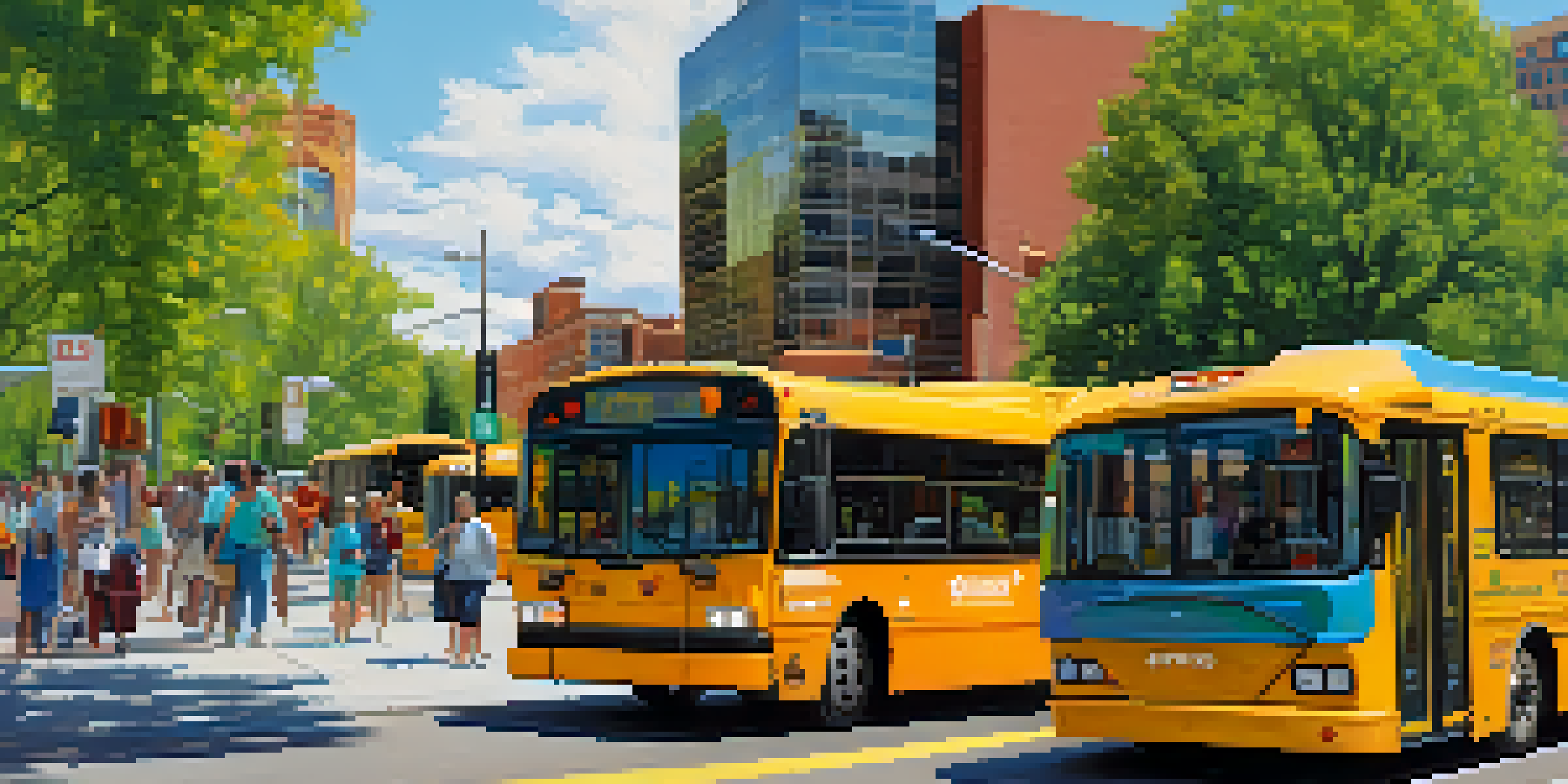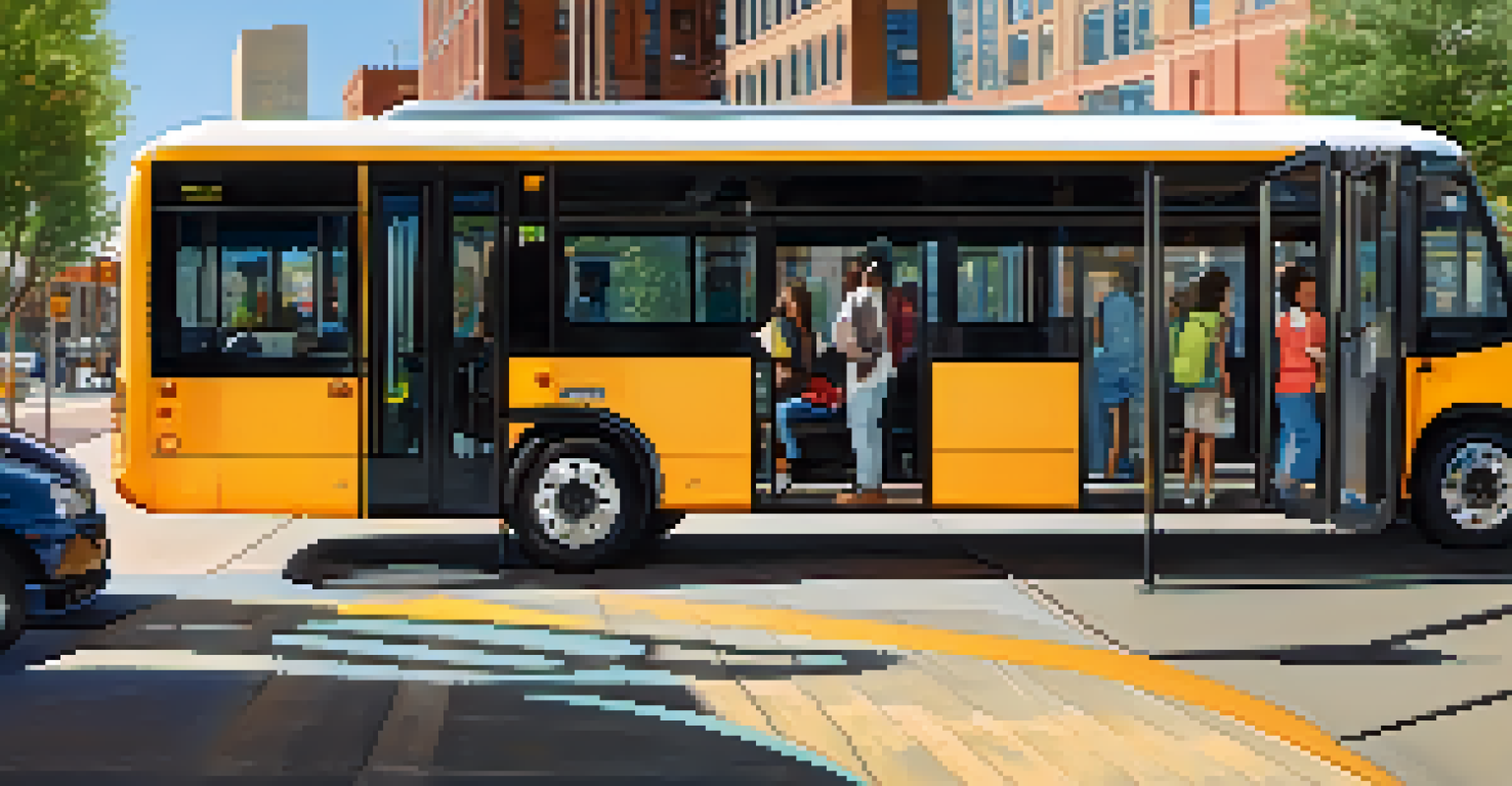The Impact of Denver's New Bus Services on City Mobility

Introduction to Denver's New Bus Services
In recent years, Denver has revamped its public transportation system, introducing new bus services that aim to enhance city mobility. These changes are not just about adding more buses; they represent a strategic effort to create a more interconnected and efficient transit network. As Denver continues to grow, addressing the demands for effective public transport has become increasingly crucial.
Public transport is the backbone of a city’s mobility and a crucial factor in reducing traffic congestion and pollution.
The new bus routes have been designed to serve both high-density areas and underserved neighborhoods, ensuring that more residents have access to reliable transportation. This initiative aligns with Denver's broader goals of sustainability and reduced traffic congestion, making it easier for people to choose public transport over personal vehicles. The hope is that these changes will encourage a shift in commuting habits across the city.
In this article, we’ll explore the various aspects of these new bus services, from their design and implementation to their impact on residents' daily lives. By understanding how these changes affect mobility in Denver, we can better appreciate the role of public transport in shaping urban environments.
Enhanced Accessibility for Residents
One of the key benefits of Denver's new bus services is the increased accessibility for residents across different neighborhoods. Many previously isolated areas are now connected to the city’s core, allowing residents to reach jobs, schools, and essential services with greater ease. This improvement is particularly significant for low-income communities that heavily rely on public transportation.

The introduction of more frequent bus routes means that commuters no longer have to wait long periods for a ride. This not only saves time but also makes public transport a more attractive option compared to driving. By reducing the waiting time, the city hopes to boost ridership and foster a culture of public transport use.
Enhanced Accessibility for Residents
Denver's new bus services significantly improve access to jobs and essential services for residents, particularly in underserved neighborhoods.
Moreover, accessibility isn’t just about physical routes; it also involves ensuring that buses are equipped to accommodate everyone, including people with disabilities. Enhanced features such as low-floor buses and improved scheduling have been implemented to make the system more user-friendly for all residents.
Environmental Benefits of Public Transport
With rising concerns about climate change, Denver's new bus services play a vital role in promoting sustainable transportation. By encouraging residents to use public transport, the city can significantly reduce greenhouse gas emissions that stem from individual car use. Buses, particularly those that are electric or hybrid, contribute to cleaner air and a healthier environment.
Transportation is the center of the community, and it’s an important part of a healthy ecosystem.
In addition to reducing emissions, a well-utilized bus system can help alleviate traffic congestion, which is another contributor to pollution. As more people opt for buses, fewer cars on the road lead to less idling and more efficient travel times for everyone. This shift is crucial for maintaining Denver’s air quality and overall livability.
Moreover, public transport initiatives can promote walkable communities, encouraging residents to engage more with their neighborhoods. The synergy between bus services and pedestrian-friendly infrastructure can make city life more enjoyable and sustainable.
Economic Impact of Improved Transit Services
The economic implications of Denver's new bus services extend beyond just transportation; they can stimulate local economies as well. With better access to public transport, businesses located near bus stops can attract more customers. Increased foot traffic not only benefits retailers but also enhances the overall vibrancy of neighborhoods.
Job accessibility is another critical aspect of this economic impact. With improved transit options, individuals can access a wider range of employment opportunities without the burden of long commutes. This can lead to higher employment rates and contribute to economic growth in the region.
Economic Growth Through Transit
Better public transport options stimulate local economies by increasing customer foot traffic and expanding job accessibility.
Furthermore, investing in public transport infrastructure can create jobs during the construction and operational phases. As the city invests in its bus services, it also invests in the workforce, providing employment opportunities that can have long-lasting positive effects on the community.
Challenges Faced by the New Bus Services
Despite the promising benefits, the implementation of Denver's new bus services is not without challenges. One of the primary concerns is ensuring that the system is reliable and meets the needs of its users. If buses do not run on time or frequently enough, residents may revert to their cars, undermining the goals of the initiative.
Another challenge is public perception and awareness. Many residents may not be aware of the new routes or may be hesitant to switch from personal vehicles to public transport. Efforts to promote these services through community outreach and education will be essential for encouraging ridership.
Lastly, funding and resources remain a critical issue. As Denver continues to grow, the demand for public transportation will increase, necessitating ongoing investment to expand and maintain the bus services. Balancing budget constraints with the need for effective transit solutions will be an ongoing challenge for city leaders.
Community Involvement and Feedback
Community involvement is a critical component in the success of Denver's new bus services. Engaging residents in the planning and implementation phases ensures that the services meet the specific needs of the communities they serve. Public forums, surveys, and feedback sessions can help city planners identify areas for improvement and adapt services accordingly.
Listening to community feedback not only helps refine existing services but also fosters a sense of ownership among residents. When people feel heard and see their suggestions implemented, they are more likely to use and advocate for public transport, creating a supportive network of users.
Community Engagement is Key
Successful implementation of the new bus services relies heavily on community involvement and feedback to tailor the transit system to residents' needs.
Additionally, local partnerships with organizations can enhance outreach and education efforts. Collaborating with schools, businesses, and community groups can help disseminate information about the services and encourage more residents to take advantage of the new transit options.
Future Outlook: A Vision for Denver's Transit System
Looking ahead, the future of Denver's transit system appears promising, with ongoing developments aimed at further enhancing mobility. City officials are exploring innovative solutions, such as integrating technology for real-time tracking of buses, which can improve the user experience. These advancements will make public transport more efficient and user-friendly.
Moreover, as the city continues to grow, there will be a focus on expanding the bus services to cover emerging neighborhoods and areas with high demand. This expansion is crucial for maintaining a connected urban environment where public transport remains a viable option for all residents.

Ultimately, the success of Denver's new bus services will depend on sustained community engagement, ongoing investment, and the willingness to adapt to changing needs. By prioritizing public transportation as a fundamental aspect of urban planning, Denver can continue to evolve as a vibrant and accessible city.